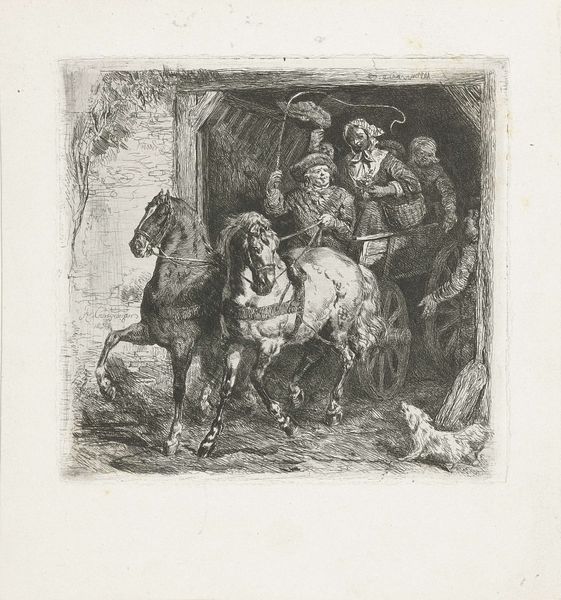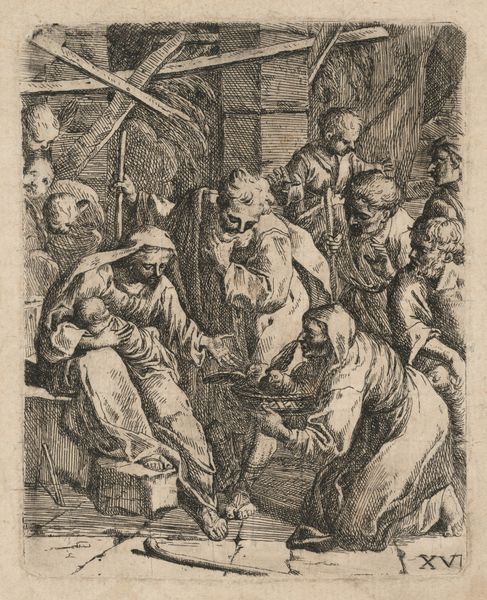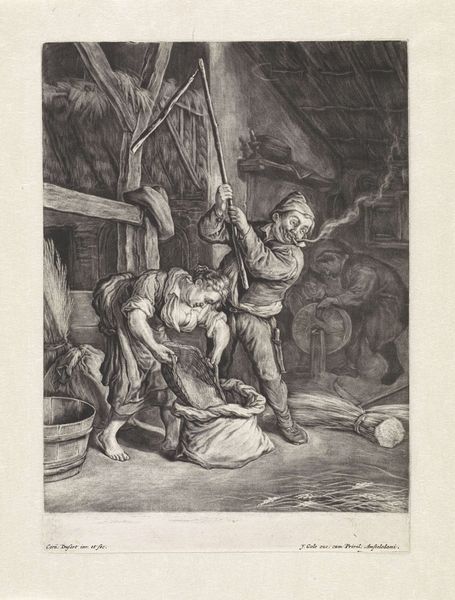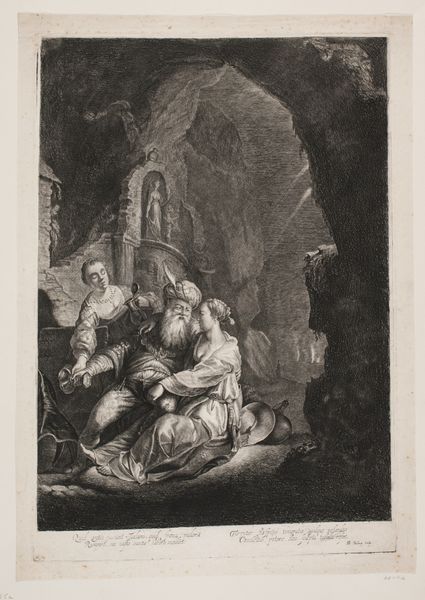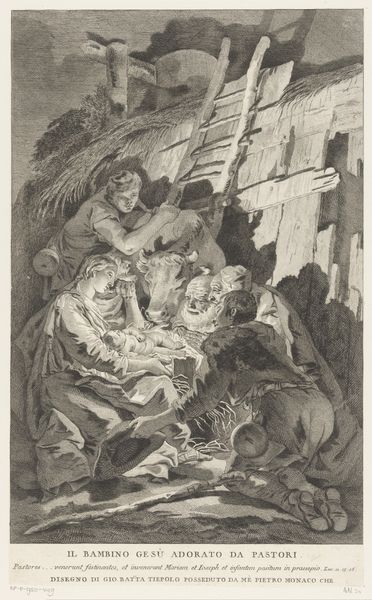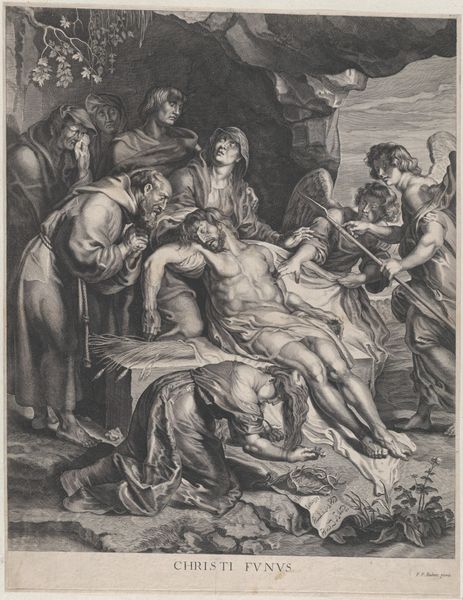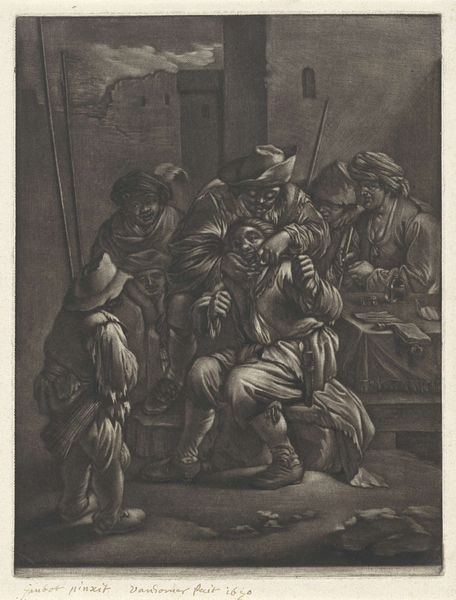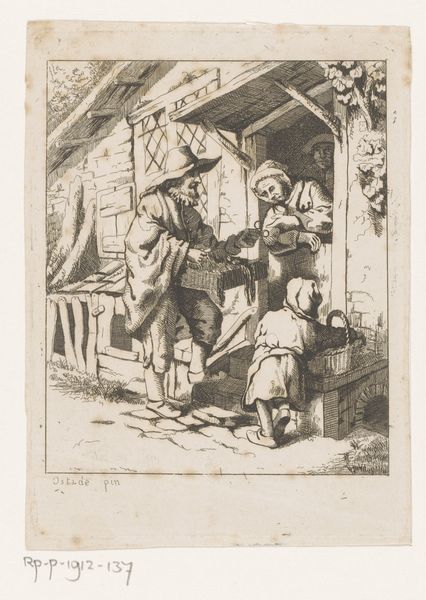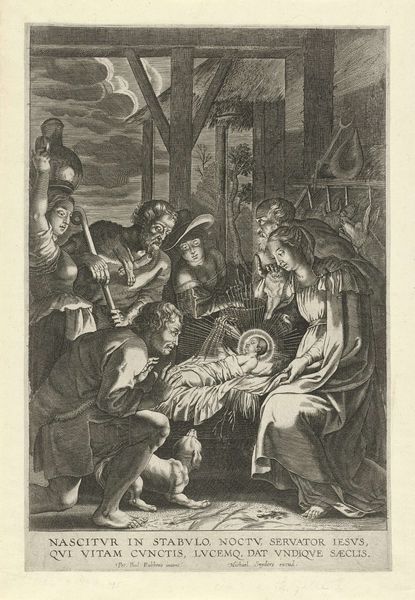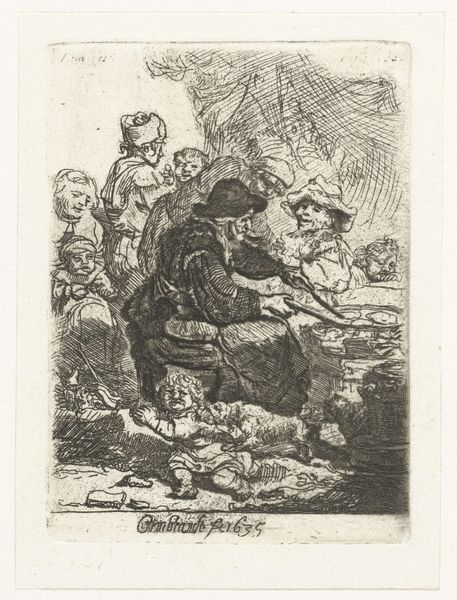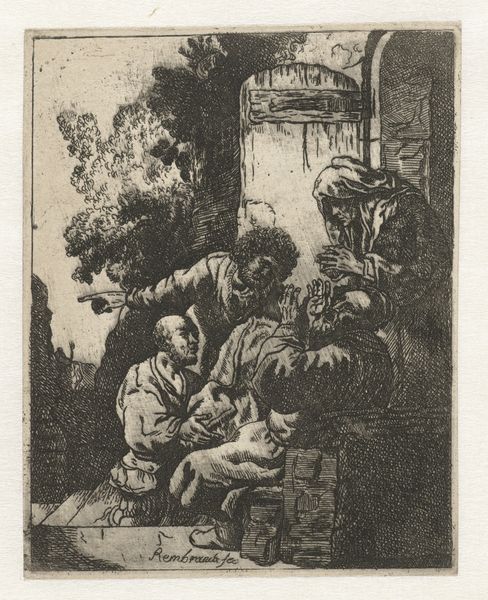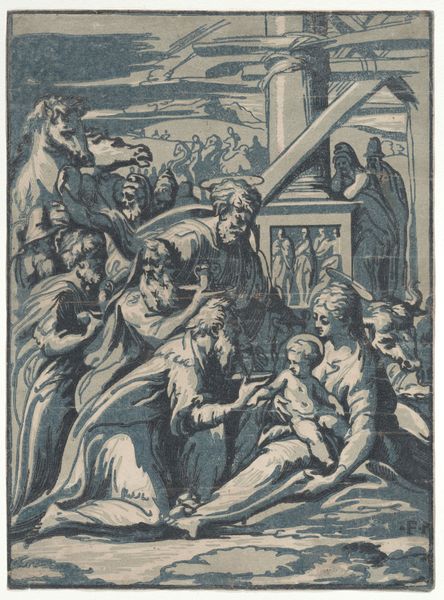
print, etching, intaglio, engraving
#
narrative-art
#
dutch-golden-age
# print
#
etching
#
intaglio
#
genre-painting
#
engraving
#
realism
Dimensions: height 216 mm, width 154 mm
Copyright: Rijks Museum: Open Domain
Curator: Here we have Cornelis Dusart's "November," likely completed between 1679 and 1704. It’s an intaglio print, combining etching and engraving techniques. Editor: Visually, it's quite intense. A flurry of activity focused around the carcass of a pig. There’s a real dynamism in the composition. Curator: Dusart masterfully uses line and tone here. The deep blacks create a palpable sense of the harsh conditions and the labor involved in preparing for winter. This print offers insights into the social customs around food production in the Dutch Golden Age. It speaks volumes about community dependence and resourcefulness. Editor: The realism is remarkable, particularly in the depiction of textures: the rough garments of the figures, the bristles of the pig, the uneven surfaces of the surrounding architecture. I'm also drawn to how Dusart orchestrates light and shadow. It gives the scene depth and creates a rather stark contrast, doesn't it? Curator: Absolutely. The material realities are ever-present: the implements, the basins, even the building structure, suggesting not only rural life, but the structures supporting it, both material and communal. What strikes me is how the production process highlights an integral cycle of the season and labor, reflecting everyday economics in the pre-industrial era. Editor: It definitely avoids idealization. The figures are coarse, focused on their work, there is nothing romantic or elevated. The focus remains relentlessly on the visceral experience. In terms of formal qualities, that rawness communicates a specific truth. Curator: Precisely! Understanding this image in its original context—as a print meant for relatively widespread distribution—tells us about how everyday life, often arduous labor, was viewed, disseminated, and perhaps even valued. It’s an echo of social documentation as artistic consumption. Editor: For me, observing how light defines form in Dusart's image becomes an analytical tool to understand how his artistic choice underlines a direct, unadorned depiction. An intense visual experience in light and shadow. Curator: It underlines the ways in which we create meaning from work, food, and community, all within a system, rendered powerfully on a single print. Editor: Ultimately, this is where Dusart achieves harmony in "November" - intertwining stark observation with material awareness.
Comments
No comments
Be the first to comment and join the conversation on the ultimate creative platform.
